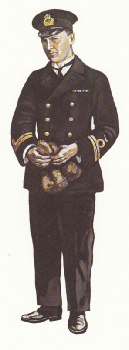Alec and Vera had agreed that if he was killed, she and their son  would settle in Melbourne with the help of Little’s family. This duly happened. Vera remarried in the 1920s; Alec junior grew up to head the electronics laboratory at Melbourne University. He never married, living with his mother until his death in 1976. Vera died a year later.
would settle in Melbourne with the help of Little’s family. This duly happened. Vera remarried in the 1920s; Alec junior grew up to head the electronics laboratory at Melbourne University. He never married, living with his mother until his death in 1976. Vera died a year later.
Despite Little's prowess in combat, as an aviator he was ordinary at best, enduring a number of crash-
Fellow Naval 8 Squadron member Reggie Soar recalled, "Although not a polished pilot, he was one of the most aggressive ... an outstanding shot with both revolver and rifle ...", while ace Robert Comptson described Little as "not so much a leader as a brilliant lone hand ... Small in stature, with face set grimly, he seemed the epitome of deadliness".
His appetite for air fighting was insatiable. When not sharpening his eye on the airfield's rabbits with a .22 rifle, he would lead offensive patrols with scant regard for danger. On one occasion he attacked a particularly effective German Flak battery near La Bassee by flying in at 7000 feet, spiralling earthwards in a controlled 'falling leaf’ spin and finally flattening out at very near ground level to scatter the amazed gunners with machine-
Many who knew him saw a sensitive side, however, Soar noting that in addition to his skill with guns, Little was "also a collector of wild flowers". Squadron commander Raymond Collishaw, who would finish the war as the RNAS' top-
After the War, his former Commanding Officer eulogised him in the squadron history Naval Eight: ‘Little was just an average sort of pilot, with tremendous bravery. Air fighting seemed to him to be just a gloriously exhilarating sport…he never ceased to look for trouble, and in combat his dashing methods, close range fire and deadly aim made him a formidable opponent, and he was the most chivalrous of warriors. As a man, he was a most lovable character.’



Robert Alexander Little -






